
YOUR BEST SOURCE FOR RACCOON REMOVAL IN LONG ISLAND NEW YORK
HUMANE RACCOON REMOVAL LONG ISLAND, NEW YORK
Raccoons are moderate-sized mammals that are native to North America. They are found across the United States mainly due to their exceptional ability to adjust to and take advantage of new environments. Raccoons are amongst the most widespread wildlife mammals in New York. Adult raccoons on Long Island can weigh thirty pounds, and males are usually larger than females. The most distinguishing physical features of the raccoon are its bandit mask and ringed tail. Raccoons are known for their mischievous nature, making them nuisance animals, particularly when it comes to trash cans. Raccoons are social animals that live together in groups and have a life expectancy of only about three years in the wild. They are nearsighted and color-blind but have eyes that are well-adapted to low-light conditions giving them exceptional night vision. Raccoons have uniquely shaped eyes, and the retinal surface of this nocturnal critter's eyes is much larger than the retinal surface of the eyes of diurnal animals. Nocturnal animals possess eyes with a tapetum lucidum, a mirror-like reflective layer at the posterior portion of the eye that functions to supply additional light to the retina. When illuminated, the tapetum lucidum results in the animal's eyes glowing in the dark. Raccoons have an outstanding sense of smell and hearing and can even hear sounds made by earthworms beneath the ground.
Raccoons: Hands and Sense of Touch
The scientific name of the raccoon species found on Long Island, New York, is Procyon lotor. Procyon is a Greek term that means "before the dog" or "dog-like." Lotor is a Latin term that means washer, referring to the raccoon dipping its food in the water. Water enhances the tactile nerve responsiveness allowing the raccoon to obtain more information about their food. It does this by increasing the receptiveness of the nerve endings in the raccoon's paw. Compared to other mammals, the paws of raccoons contain four to five times the number of touch receptors. The sense of touch is the sense of most importance for raccoons. Raccoons possess hypersensitive front paws, and nearly two-thirds of the region responsible for sensory perception in the cerebral cortex of their brain is specialized for interpreting tactile impulses. The hands of raccoons consist of five long, tapered fingers and partly retractable claws, which are used for climbing and other purposes. Raccoons lack thumbs, so they can't grasp objects with one hand the way humans can, but they can use both forepaws together to lift and acutely manipulate objects. In urban areas, such as Long Island, New York, raccoons will use their hypersensitive front paws to find weak spots through which they will gain entrance into a home or business. Raccoons may rip a hole in a water-damaged area of a roof, push through a soffit, or enter through a gable vent to access an attic. In the attic of a Long Island residence, raccoons will damage central air conditioning ducts, insulation, and electrical wires, which can give rise to a fire. Like most animals, raccoons are opportunistic critters and seek a lifestyle with the greatest reward for the least effort. Raccoons will make their home in an attic, crawl space, garage, shed, barn, chimney, under a deck, gazebo, or porch of a Long Island home. If you suspect raccoons have taken up residence in your house, you need to contact Nassau County Nuisance Wildlife Removal Services immediately to resolve your wildlife control issue.
Raccoons: Omnivorous Scavengers
Raccoons are omnivorous scavengers, feeding on food of both animal and plant origin. Although usually nocturnal, raccoons can sometimes be observed foraging for food during daylight hours. Omniverousness has much to do with the food-foraging habits of raccoons. Raccoons loot the farmer's cornfield, lift the eggs from the bird's nest, gather many different nuts and berries, tear up lawns in search of grubs, catch turtles and frogs, rob chicken roosts, and wreak havoc in backyard koi ponds. All these and a hundred other activities combine to illustrate the raccoon's great adaptability in securing a varied diet.
HOW TO GET RID OF RACCOONS LONG ISLAND, NEW YORK
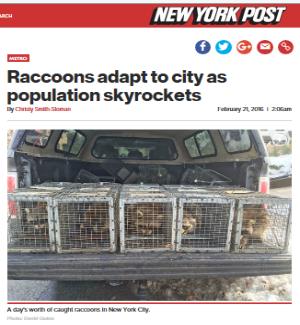
Raccoon Inspection - This is the initial step in the raccoon removal process. Wildlife control operators from Nassau County Nuisance Wildlife Removal Services will inspect your property to determine what animal is inhabiting it.
Raccoon Sounds - Noises in the attic at night, maybe from raccoons inhabiting your Nassau County, Long Island residence. You may hear loud pounding noises, scratching, heavy walking, and growling sounds coming from the attic. High-pitched bird-like chirping sounds from the attic usually indicate the presence of baby raccoons.
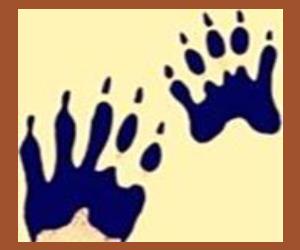
Raccoon Footprints - May be seen in the snow. Raccoon footprints may also be evident on gutter leaders, PVC fences, and shingles of homes and buildings in Nassau County. There are five toes on the front and back feet of a raccoon. The hind foot displays the heel, is approximately three to four inches in length, and resembles a footprint made by a small person. The front prints of the raccoon are two to three inches in length and have smaller heel marks.
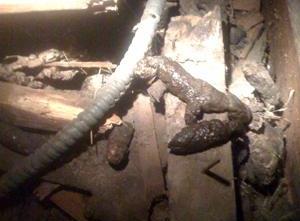
Raccoon Poop - Raccoons may defecate on a woodpile, at the base of a tree, a staircase, a patio, a log, a deck, a roof, a shed, or in an attic of a Nassau County home. Raccoon feces is two to three inches long and looks like dog poop. What distinguishes it as raccoon poop is the presence of berry seeds. Our Nassau County biohazardous waste removal contractors remove raccoon feces from attics in Long Island, New York.
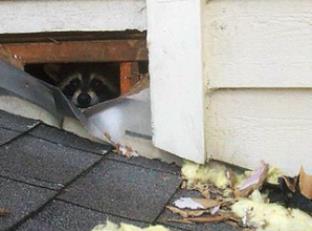
Raccoon Damage - Raccoons will damage shingles and rip a hole in a roof of a Long Island dwelling to gain entrance to the attic.
Garbage Cans - Opened or overturned by raccoons as they feed on trash.
Lawns - Raccoons searching for grubs or earthworms will tear up a yard. Raccoons have incredible dexterity and can roll up substantially large pieces of sod in search of insects.
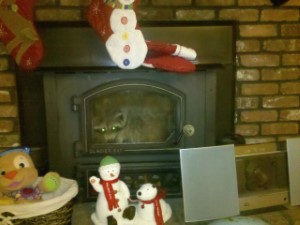
Raccoon Repellents - These are not an effective wildlife control technique. Numerous products are sold online and in neighborhood hardware stores that guarantee a quick-fix wildlife control solution. Wildlife-repellent products contain predator urine, such as coyote, fox, bobcat, cougar, and even wolf. Predator urine products sold in liquid or granular form are ineffective in getting rid of raccoons. Mothballs and products containing naphthalene are marketed as magic cure-all critter repellents for every animal species. Repeated laboratory tests and our own experiences have shown mothballs to be an ineffective raccoon repellent. Ultrasonic pest repeller devices and strobing light machines are also useless.

Raccoon Trapping - This is an effective wildlife control strategy when trying to get rid of raccoons. Humane raccoon trapping is the raccoon control approach used by Nassau County Nuisance Wildlife Removal trappers. Our raccoon removal experts have numerous years of experience in the field of wildlife management. There are plenty of humane raccoon traps and baits available to remove raccoons in Nassau County, Long Island. The type of humane raccoon trap and bait that our nuisance wildlife control operators use depends on several factors, including the time of the year. The raccoon removal trapping strategies that our Nassau County wildlife removal professionals use are contingent upon the circumstances and where the raccoons are gaining entrance to your Long Island home or business. Our New York State licensed nuisance wildlife control operators perform raccoon removal in Nassau County in attics, chimneys, sheds, barns, crawl spaces, garages, and under porches and decks. Our wildlife control operators know what humane raccoon trap and bait to use in every raccoon removal situation.

Raccoon Exclusion - Upon completion of the raccoon removal process, we will send out a licensed Nassau County contractor to give you a free estimate on any raccoon damage repairs. Repair work is essential to keep raccoons and other wild animals out of your residence or business. We also install chimney caps to stop raccoons, squirrels, birds, and bats from coming down the chimney. Nassau County Nuisance Wildlife Removal Services will suggest any improvements that can be made to your residence or business to prevent future encounters with unwanted wildlife.